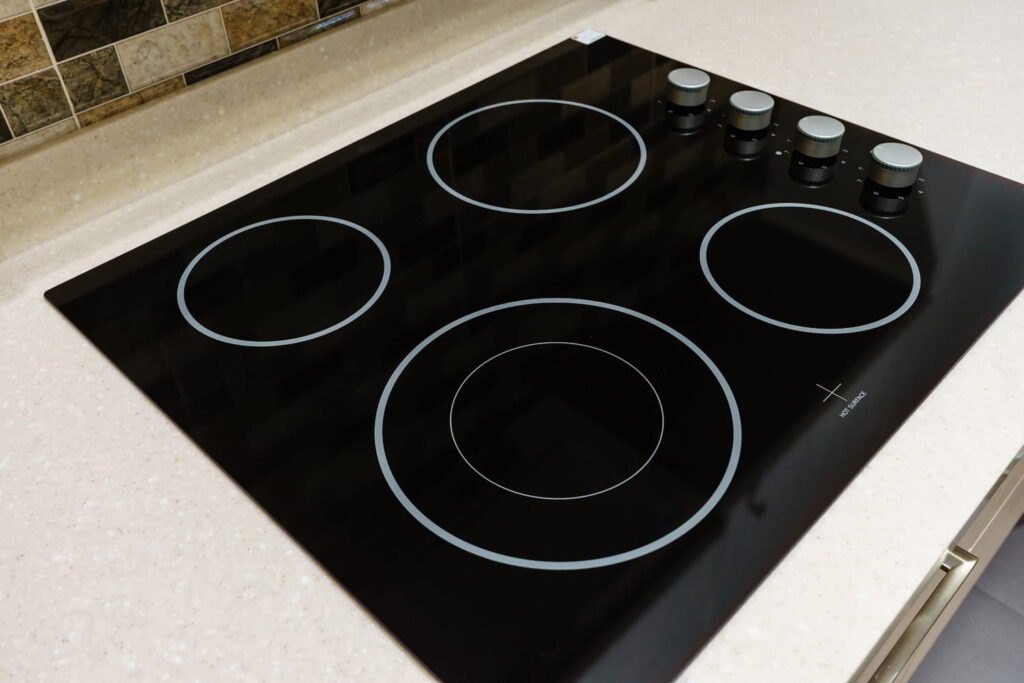In this article, we take a look at benefits and disadvantages induction hob. This innovative technology offers many advantages, such as rapid cooking and energy efficiency, but it can also have a few drawbacks, such as high initial cost and the need for specific cookware. Follow us to find out more about these key points.
Induction Cooker Power Problem Fix in 10 Minutes
[arve url="https://www.youtube.com/embed/ab9DoEx4m6Q "/]
What are the disadvantages of an induction hob?
The disadvantages of an induction hob are as follows:
1. High cost : Induction hobs are generally more expensive than traditional cookers, such as electric or gas hobs.
2. Special pans required: To use an induction hob, you'll need magnetic pots and pans compatible with this technology. This may entail additional costs if you need to replace your existing cookware.
3. Longer heat-up times : Compared with gas hobs, induction hobs can take longer to heat up cooking vessels, which can extend meal preparation time.
4. Less precise reactivity: Induction hobs can be slightly less responsive than gas hobs. This can make precise temperature control more difficult when cooking delicate dishes.
5. Noise : Some induction hob models may generate a slight noise when in use, which may be noticeable to some noise-sensitive people.
It's important to note that despite these drawbacks, induction hobs offer many advantages, such as fast, precise cooking, enhanced safety and ease of maintenance. The decision to opt for an induction hob will therefore depend on the individual preferences and budgetary constraints of each user.
What's better between glass-ceramic and induction?
The answer to this question depends on personal preferences and individual needs. Ceramic glass and induction are two popular types of hob. which offer different benefits.
Ceramic glass uses radiant heat to heat pots and pans. It is generally less expensive than induction and can be used with any type of cookware. However, cooking can take longer, and glass-ceramics can be harder to clean because of their smooth surface.
Induction uses electromagnetic fields to heat compatible cookware directly. It provides fast, precise heating, which saves time during cooking. What's more, induction is more energy-efficient, as it heats only the cookware in contact with the hob. However, it's important to note that only iron or magnetic stainless steel cookware can be used on induction hobs.
In short, if you're looking for a less expensive, more versatile option in terms of cookware, glass-ceramic could be a good choice. However, if fast, precise heating and higher energy efficiency are important criteria for you, induction would be recommended.
What's the point of induction?
Induction is an effective method of capturing readers' attention on a news site. It arouses their curiosity and encourages them to continue reading.
By using catchy headlines, punchy introductions and attractive visual elements, induction plays an essential role in creating initial interest in readers. It makes them want to know more about the subject.
Induction can also be used to highlight the most important information and key moments in the article. This allows readers to quickly identify the essence of the story and decide if they want to read the whole article.
So induction plays a crucial role in retaining readers on a news site. It encourages them to stay on the site, explore more content and return regularly. This helps maintain a high level of visitor numbers and builds reader loyalty.
In conclusion, induction is a powerful tool for attracting, engaging and retaining readers on a news site. By using effective induction techniques, content creators can maximize the impact of their articles and guarantee a pleasant, captivating reading experience for users.
Does an induction hob consume a lot of electricity?
Does an induction hob consume a lot of electricity?
Induction hobs are generally regarded as energy-saving appliances. Compared with traditional hobs, they offer greater energy efficiency.
How does an induction hob work?
An induction hob uses magnetic technology to heat cooking utensils directly, without losing heat to the surrounding air. This saves energy, as only the heat needed for cooking is generated.
What is the electrical power of an induction hob?
The electrical power of an induction hob varies according to its specific features and the number of cooking zones. On average, the electrical power of induction hobs ranges from 1,200 to 3,700 watts.
Does this mean that an induction hob consumes little electricity?
Yes, thanks to their energy efficiency, induction hobs generally consume less electricity than traditional cooktops. This energy saving can also translate into savings on electricity bills in the long term.
However, it is important to note that actual electricity consumption depends on how the induction hob is used. Prolonged use at high power may result in higher electricity consumption. It is therefore recommended to use the power required for each cooking task to optimize energy efficiency.
In conclusion, induction hobs are considered energy-saving appliances due to their magnetic technology and energy efficiency. However, actual electricity consumption depends on how the hob is used.
In conclusion, the induction hob offers many advantages benefits. It cooks quickly and precisely, saving time in the kitchen. What's more, it's also very safe, thanks to its pan detection system and cool-touch surface. In terms of energy efficiency, the induction hob is also highly appreciated for its energy-saving features.
However, it is important to note certain disadvantages of the induction hob. Firstly, it requires the use of specific pans made of ferromagnetic material, which can sometimes represent an additional investment. In addition, it is generally more expensive to purchase than other types of hob. Finally, induction hobs can cause electromagnetic interference with certain sensitive electronic equipment, such as pacemakers or medical monitoring systems.
Despite these drawbacks, the induction hob remains a popular choice for many households due to its many advantages. So it's important to consider your needs and constraints before choosing the type of hob best suited to your kitchen.








